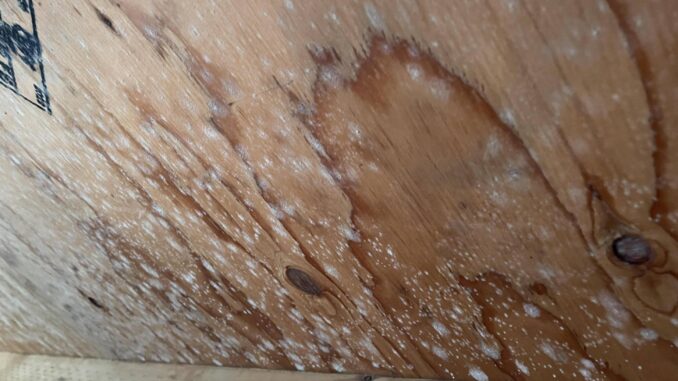
Mold is one of the most common issues that can arise in homes, particularly in damp or humid conditions. One of the places where mold can develop is on plywood, which often gets overlooked when discussing mold growth. Is mold on plywood dangerous? Absolutely. Mold can create serious health issues and lead to significant damage to the structure of your home. In this article, we will explore the various dangers of mold on plywood, including health risks, property damage, and how to deal with it effectively. By the end, you will understand why addressing this issue promptly is so important.
What is Mold and Why Does It Grow on Plywood?
Mold is a type of fungus that thrives in moist environments. Mold spores are constantly present in the air, and when they land on a damp surface, they begin to grow. The presence of mold on plywood is not only unsightly, but it can also pose serious health risks.
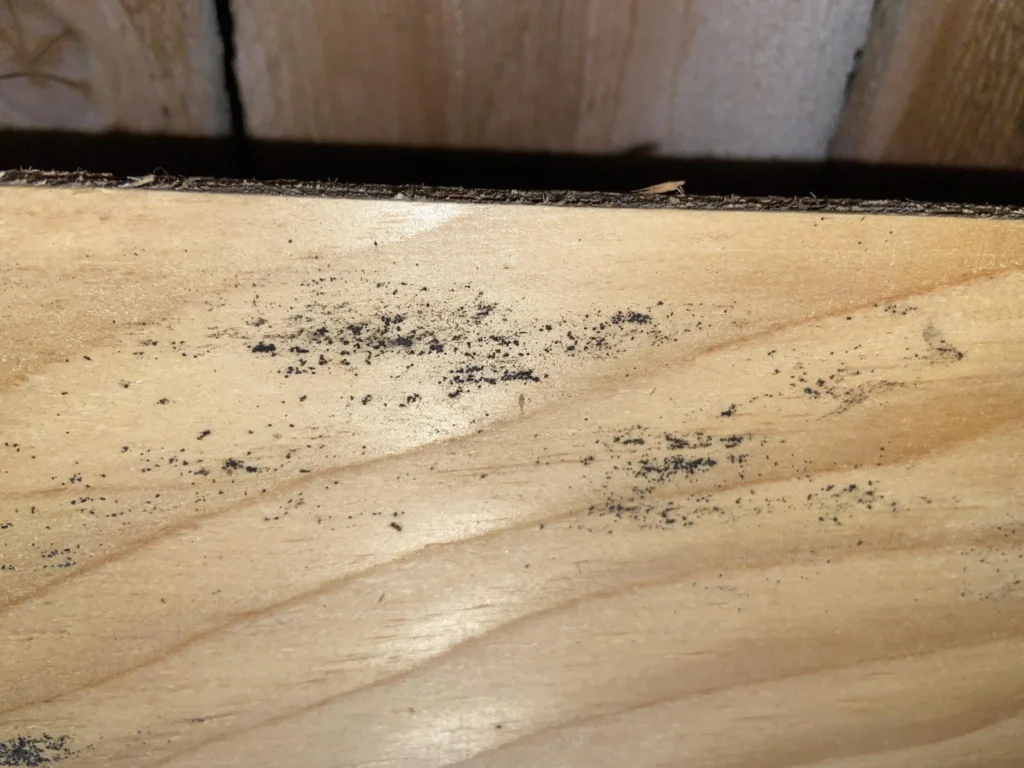
The Biology of Mold
Mold grows from spores that are too small to be seen with the naked eye. Once mold spores find a suitable environment with moisture, warmth, and organic material, they start to grow into mold colonies. The surface of plywood provides the perfect medium for mold to thrive due to its porous nature. Mold is able to penetrate into the layers of the plywood, which makes it difficult to completely remove without replacing the material in severe cases.
Why Does Plywood Encourage Mold Growth?
Plywood is often used in areas that are prone to moisture, like basements, bathrooms, kitchens, or attics. If water damage or high humidity occurs, plywood becomes the perfect environment for mold to flourish. Moisture trapped in the layers of plywood can create ideal conditions for mold growth, especially if there is poor ventilation in the area. Is plywood with mold hazardous? Yes, because the combination of moisture and organic material creates an environment that mold spores are eager to colonize.
In areas with consistent moisture, plywood surfaces are at high risk of developing mold colonies. If there’s a persistent leak or poor drainage, the plywood will absorb this moisture, encouraging mold to grow. Mold growth may not always be immediately visible, as it may begin to grow in hidden areas, such as behind walls or underneath the flooring, making it a more dangerous threat to your health and home.
Is Mold on Plywood Dangerous to Your Health?
The presence of mold on plywood isn’t just a problem for the structural integrity of your home — it can seriously impact your health, too. Mold exposure can lead to various health problems, particularly respiratory issues.
How Mold Exposure Affects Your Health
Mold releases spores into the air, which can be inhaled into your lungs. Inhaling mold spores can lead to a variety of respiratory issues, including coughing, wheezing, and chest tightness. Even short-term exposure can cause discomfort for individuals who are sensitive to mold. For people with pre-existing respiratory conditions like asthma, the symptoms can be more severe.
Vulnerable Populations
Certain groups of people are more vulnerable to the effects of mold exposure. Children, the elderly, and individuals with weakened immune systems are particularly at risk. Their bodies may struggle to defend against the harmful effects of mold spores, leading to more serious health complications. Prolonged exposure to mold can lead to the development of chronic respiratory problems, and in some cases, infections. It’s essential to consider the people living in your home when deciding how urgently to address mold issues on plywood.
Toxic Mold: Is Mold on Plywood a Health Hazard?
While most types of mold are generally not life-threatening, certain types can be dangerous. Black mold (Stachybotrys) is one of the most toxic forms of mold and can develop on plywood in damp environments. Is mold growth on plywood dangerous to health? Yes, black mold releases mycotoxins that can lead to severe symptoms, including headaches, dizziness, nausea, memory problems, and even immune system suppression. Exposure to this type of mold should be addressed immediately, and if you suspect it, it’s important to have the area inspected by professionals.
If the mold on your plywood appears dark and slimy, it’s essential to treat it as a potential health hazard. Ignoring it could lead to long-term health complications for anyone exposed to it. It’s also important to note that different people have varying sensitivities to mold. Some may experience only mild irritation, while others may experience more serious reactions.
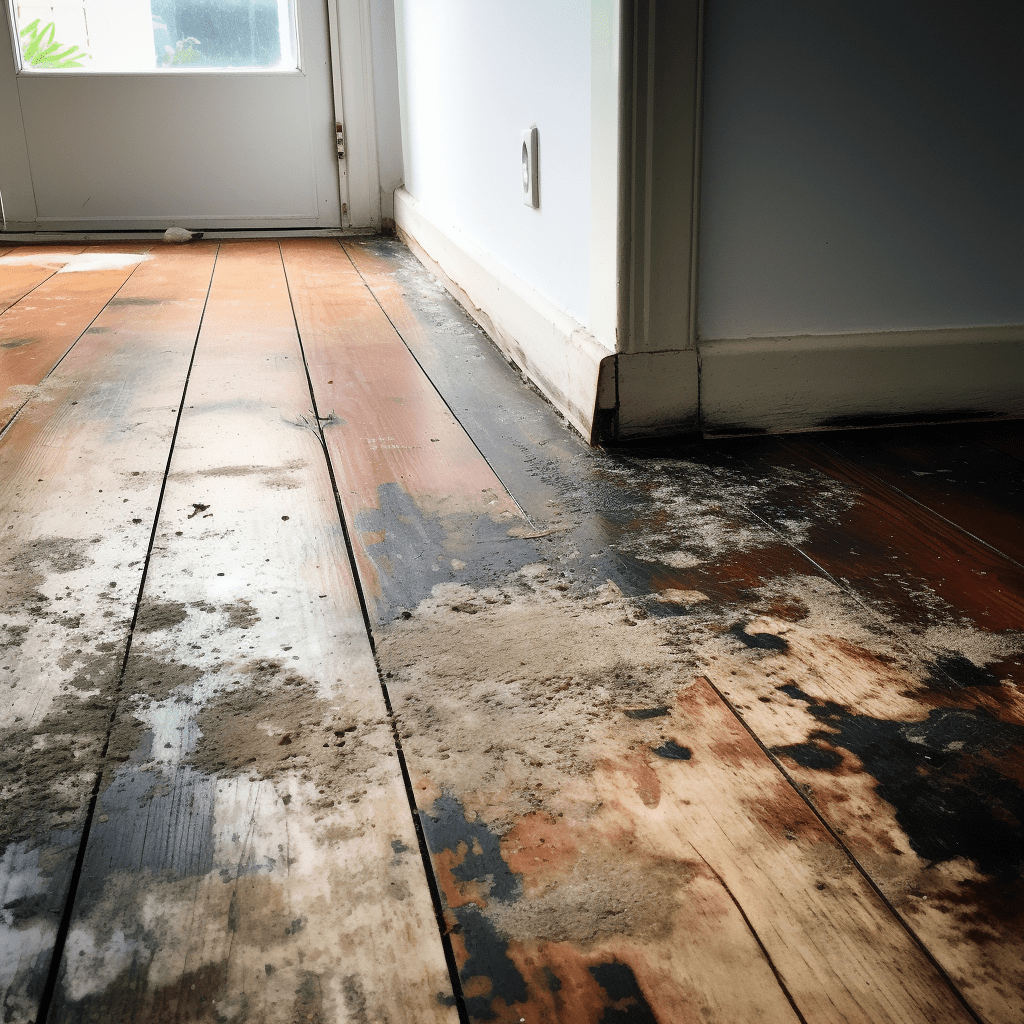
The Hidden Dangers of Mold on Plywood: Why You Shouldn’t Ignore It
It’s easy to overlook mold growth on plywood, especially if it is hidden behind walls or under flooring. However, mold on plywood poses several dangers that go beyond health issues.
Mold’s Impact on Structural Integrity
When mold is left unchecked, it can begin to eat away at the plywood itself. Plywood is made from layers of wood pressed together, and when mold grows, it can cause the material to weaken and deteriorate. This means that the longer mold is left untreated, the more it can compromise the structural integrity of your home. If the plywood is significantly damaged by mold, it may need to be replaced, which can be costly and time-consuming.
The Financial Cost of Mold Remediation
Mold removal and repairs come at a cost. If the infestation is extensive, mold remediation can be expensive. The costs can include hiring professional mold removal services, replacing damaged plywood, and repairing other areas affected by mold, such as drywall or insulation. Ignoring the mold early on may seem like a temporary solution, but the cost of dealing with a large-scale mold issue later can be much higher.
Spreading to Other Materials
Mold on plywood doesn’t just affect the wood itself — it can spread to other materials in your home. Once mold spores are airborne, they can settle on other surfaces like drywall, furniture, and carpeting. This spreading can lead to further contamination, making the problem harder to control. It’s important to address mold growth on plywood before it spreads to other areas in your home, as the damage can extend to other parts of the building.
How to Identify Mold on Plywood: Look for These Signs
Identifying mold on plywood is crucial in preventing it from becoming a more serious issue. If you know the signs to look for, you can take action before it causes extensive damage.
Visual Signs of Mold
Mold can often be identified by its color. It may appear as black, green, or even white spots or streaks on the surface of the plywood. If you notice any unusual discoloration or fuzzy growth on the wood, it’s a sign that mold may be present. Mold growth is often more visible in areas with high humidity, such as basements and bathrooms.
Musty Odors
Mold produces a strong, musty odor that can be a clear indication of its presence. If you smell a musty or earthy scent in areas where plywood is used, this could mean that mold is growing underneath the surface. Is mold on plywood dangerous to breathe in? Yes, prolonged exposure to mold spores, even if the growth is hidden behind walls, can harm your health, making it essential to address any mold odors immediately.
Hidden Mold
Mold doesn’t always grow on the surface of plywood. In many cases, it can grow underneath the plywood or behind walls, out of sight. It’s important to check for signs of hidden mold, particularly in areas that are prone to moisture. If you suspect that mold is growing in a concealed area, you may need a professional inspection to confirm the presence of mold.
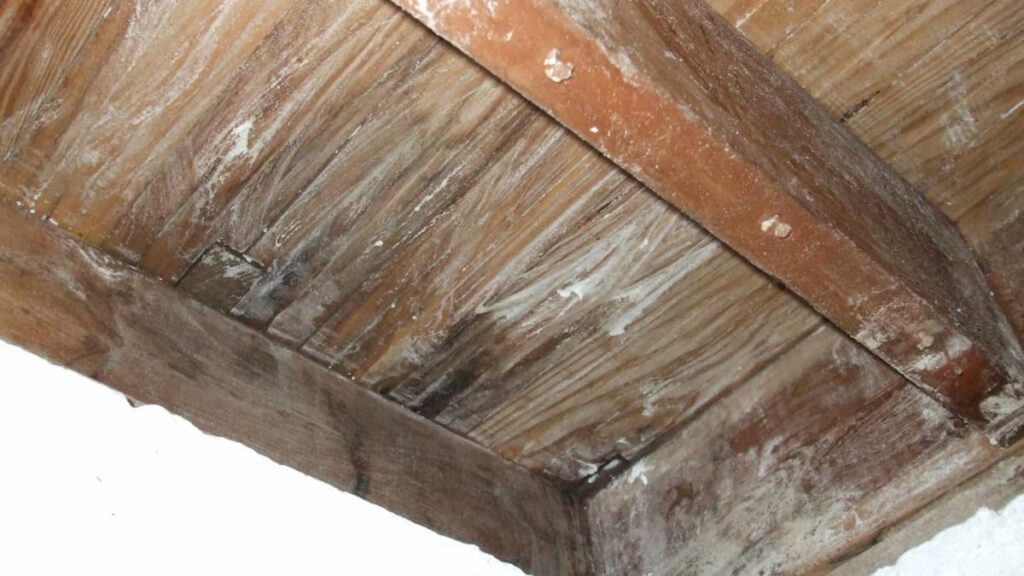
Is It Safe to Live With Mold on Plywood?
One of the most common questions people ask when they discover mold on plywood is whether it’s safe to live with it. While some people may think that small amounts of mold on plywood are harmless, this isn’t always the case.
When is it Safe to Live with Mold on Plywood?
In some cases, if the mold growth is minimal and confined to a small area, it may be safe to live with it temporarily. However, this depends on the location of the mold and whether it poses a risk to your health. Is plywood with mold risky? Yes, any amount of mold can compromise indoor air quality, and even small amounts can trigger allergies and respiratory issues. If you have mold on plywood, it’s essential to assess its severity before deciding whether it’s safe to stay in the area.
The Impact of Mold on Indoor Air Quality
Even if mold is only on the plywood and not yet spreading, it can still impact the air quality inside your home. Mold spores can become airborne and circulate throughout your home, making it difficult to avoid inhaling them. This can worsen respiratory conditions like asthma, even in individuals who are not sensitive to mold. To ensure that your home remains healthy, it’s crucial to deal with mold issues promptly.
How to Safely Remove Mold from Plywood
If you discover mold on plywood, the next step is to safely remove it. Mold removal should be done carefully to prevent exposure to harmful spores.
Preparing the Area
Before starting the mold removal process, it’s important to prepare the area. Wear protective gear like gloves, goggles, and a mask to prevent exposure to mold spores. Additionally, ensure that the area is well-ventilated. Opening windows or using fans can help disperse any spores that might become airborne during the cleaning process.
Tools and Cleaning Solutions
You can remove small amounts of mold from plywood with household products like vinegar, hydrogen peroxide, or a mixture of water and detergent. These solutions are effective for cleaning mold without using harmful chemicals. However, for larger infestations or hard-to-reach areas, you may need to hire a professional. Can mold on plywood cause harm if not removed properly? Yes, improper mold removal can cause the spores to spread, leading to more extensive damage.
Preventing Further Mold Growth
Once the mold has been removed, it’s essential to prevent it from returning. Fix any leaks or sources of moisture in the affected area. Improve ventilation by installing exhaust fans or using dehumidifiers to keep the air dry. Sealing the plywood with a moisture-resistant coating can also help protect it from future mold growth.
When to Call a Professional
If the mold infestation is severe or if it’s hidden behind walls or floors, it’s best to call a professional. Mold removal can be dangerous, and professionals have the necessary tools to deal with large infestations safely. Is mold on plywood dangerous? Yes, especially if left untreated. A professional mold remediation company can ensure that the mold is thoroughly removed and that your home is safe again.
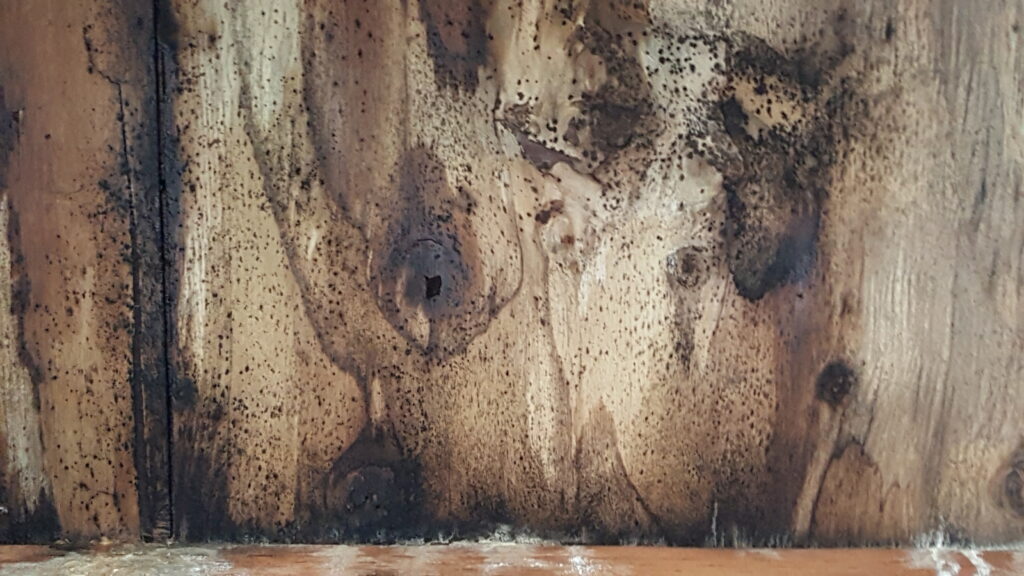
Preventing Mold on Plywood: Tips to Keep Your Home Mold-Free
Preventing mold on plywood is much easier and cheaper than dealing with a mold infestation. By taking some simple steps, you can avoid mold growth altogether.
Control Moisture Levels
One of the best ways to prevent mold on plywood is to control the moisture levels in your home. Use dehumidifiers in areas with high humidity, such as basements or bathrooms, to reduce moisture in the air. Repair any leaks in plumbing, windows, or roofing to prevent water from seeping into the walls and plywood.
Seal Plywood to Protect Against Moisture
Applying a water-resistant sealant to plywood can help protect it from moisture. This is especially important in areas where the plywood may come into contact with water or high humidity, such as in bathrooms or kitchens. A good sealant can prevent mold from developing in the first place.
Regular Inspections
Inspect your home regularly for signs of mold. Look for any discoloration or unusual odors on the plywood or in areas prone to moisture. Early detection of mold can save you time and money, and it can prevent more severe infestations from developing.
Can Mold on Plywood Be Completely Removed?
One of the most common questions is whether mold can be completely removed from plywood. While it is possible to remove mold, complete eradication depends on the extent of the infestation and the materials affected.
Factors Affecting Mold Removal Success
The key to successful mold removal is acting quickly and using the right methods. If you catch the mold early, you can usually remove it without having to replace the plywood. However, if the plywood has been severely damaged or if mold has spread deep into the layers, you may need to replace the affected sections.
When to Replace Plywood
If mold has caused significant damage to the plywood, replacing it may be the only option. Severe mold growth can weaken the material to the point where it no longer provides structural support. In these cases, replacing the plywood is necessary to ensure the safety of your home.
Preventing Mold’s Return
Even after the mold is removed, it’s essential to take steps to prevent it from coming back. Address any moisture issues and ensure that the area is well-ventilated. Consider using a moisture barrier or dehumidifier to keep the environment dry.
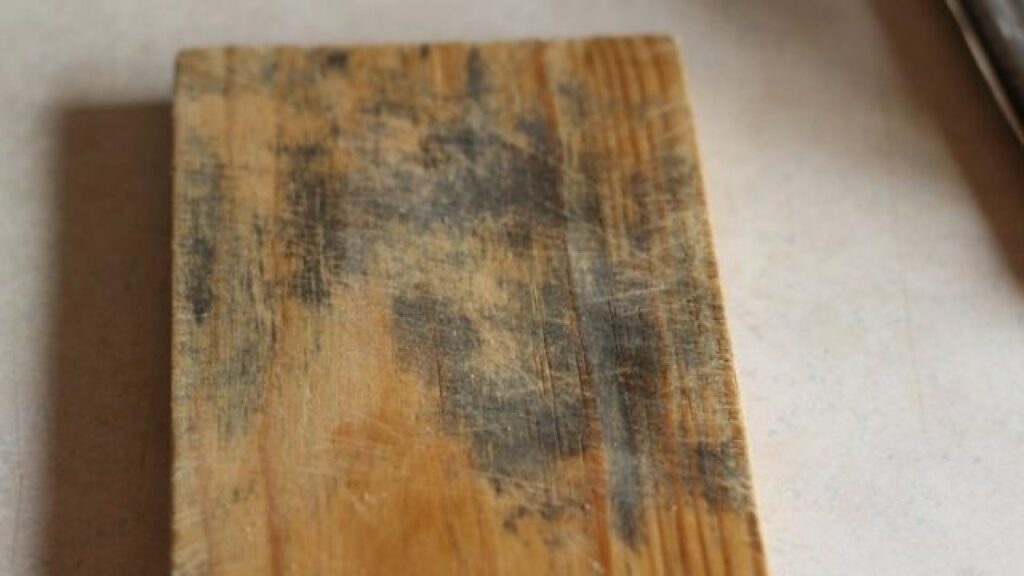
Should You Worry About Mold on Plywood?
Yes, mold on plywood is dangerous. Ignoring the issue can lead to health problems and costly repairs. Acting early to identify and treat mold on plywood is the best way to protect both your health and your home. Whether you choose to remove the mold yourself or hire a professional, addressing it quickly is key. The sooner you take action, the less risk you’ll face.
Why Mold on Plywood Shouldn’t Be Taken Lightly
It’s easy to dismiss mold growth on plywood as a minor inconvenience, but in reality, it poses significant risks to both your health and your property. Whether it’s hidden behind walls or visible on the surface, mold should always be treated seriously. Is mold on plywood dangerous? Yes, absolutely. Even small amounts of mold can lead to long-term health problems and significant damage to your home. Mold not only thrives in moist environments but can also spread quickly if left unchecked, leading to further contamination of your living space. Let’s explore why it’s crucial to deal with mold promptly.
The Link Between Mold on Plywood and Property Damage
While many homeowners are familiar with the health risks associated with mold, they may not fully grasp how it can impact the structural integrity of their home. Mold on plywood may seem harmless at first, but over time, it can weaken the plywood, causing it to become soft and brittle. This affects the strength and stability of the materials within your home. If mold spreads across multiple surfaces, it can even cause damage to the underlying foundation and other building materials like drywall and insulation.
It’s important to remember that the longer mold is allowed to persist, the more challenging it will be to completely remove. As mold eats into the plywood, it can create gaps and holes that weaken the wood. The cost of repairs increases significantly when extensive damage has occurred, making it critical to address the problem as soon as possible.
Mold’s Impact on the Air Quality in Your Home
One of the most immediate dangers of mold on plywood is its effect on indoor air quality. Mold spores that are released into the air can travel throughout the home, spreading to other surfaces and rooms. This can significantly degrade air quality, making it unsafe for anyone living in the affected environment.
For those who suffer from allergies or respiratory conditions, the presence of mold in the air can exacerbate their symptoms. Common reactions to mold exposure include sneezing, coughing, eye irritation, and even shortness of breath. Is mold on plywood harmful? Yes, mold can severely affect your air quality, leading to persistent health issues if not dealt with quickly. Those with asthma or weakened immune systems may experience even more severe reactions, making mold on plywood a serious concern.
The Health Hazards of Mold on Plywood: A Silent Threat
As we’ve discussed, the health risks associated with mold on plywood are not something to take lightly. The spores released by mold can cause a variety of health problems, both immediate and long-term.
Respiratory Issues
Inhaling mold spores can irritate the lungs and airways, causing a range of respiratory issues. People may experience coughing, wheezing, nasal congestion, and sore throats. For those with pre-existing conditions such as asthma or chronic obstructive pulmonary disease (COPD), mold exposure can trigger flare-ups and worsen symptoms.
Allergies and Skin Irritation
Mold exposure can also lead to allergic reactions, which can range from mild to severe. Common allergy symptoms include itchy eyes, a runny nose, sneezing, and skin rashes. These reactions can become worse with repeated exposure to mold, making it essential to address any mold problem on plywood as quickly as possible.
Long-Term Health Risks
Some types of mold, particularly black mold (Stachybotrys), can be even more dangerous. This toxic mold produces mycotoxins that can cause more severe symptoms, such as headaches, fatigue, dizziness, nausea, and even memory loss. Long-term exposure to mycotoxins can lead to more serious health problems, including neurological and immune system damage.
In severe cases, prolonged exposure to toxic mold can lead to chronic health conditions, especially in vulnerable individuals. Children, elderly people, and those with compromised immune systems are particularly at risk.
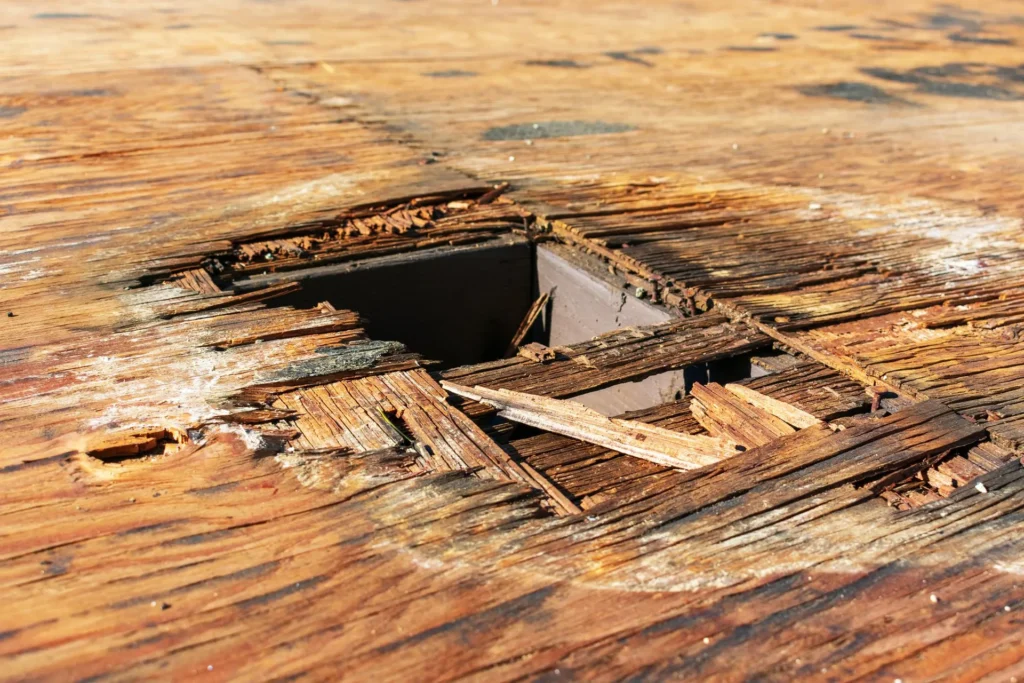
How to Protect Your Home from Mold on Plywood
While mold on plywood is a serious issue, it is also preventable. By taking the necessary steps to reduce moisture and ensure proper ventilation, you can keep mold at bay and protect your home.
Managing Moisture and Humidity
The most effective way to prevent mold growth on plywood is to control moisture levels. Plywood is particularly vulnerable in areas where humidity is high, such as basements, kitchens, and bathrooms. Moisture is the primary cause of mold growth, and controlling it can prevent the formation of mold colonies.
Investing in a dehumidifier for damp areas of your home can help reduce humidity. Additionally, make sure to fix any leaks or water sources that may allow moisture to seep into your plywood surfaces. Addressing water damage promptly is one of the most effective ways to stop mold before it starts.
Improve Ventilation in Moisture-Prone Areas
Proper ventilation is key to preventing mold growth. Areas like bathrooms and kitchens should be well-ventilated to allow excess moisture to escape. Installing exhaust fans in these areas can help reduce humidity and prevent mold from taking hold on surfaces like plywood. It’s also a good idea to keep windows open when possible to allow for airflow and reduce moisture buildup in the air.
Sealing Plywood Surfaces
To further protect your plywood from mold, consider sealing it with a moisture-resistant sealant. This will create a protective barrier that prevents water from being absorbed by the wood, reducing the likelihood of mold growth. This is especially important in areas that are frequently exposed to moisture, such as bathrooms or basements.
Regular Inspections for Early Detection
Regularly inspecting areas where plywood is used can help you catch mold problems before they become severe. Look for visible signs of mold, such as dark spots or discoloration on the wood. If you smell a musty odor in a room, it’s a good idea to investigate further, as this could indicate the presence of hidden mold.
Inspecting your home for mold every few months will give you the opportunity to address any issues before they grow out of control. Early detection is the best way to prevent the spread of mold on plywood and keep your home safe.
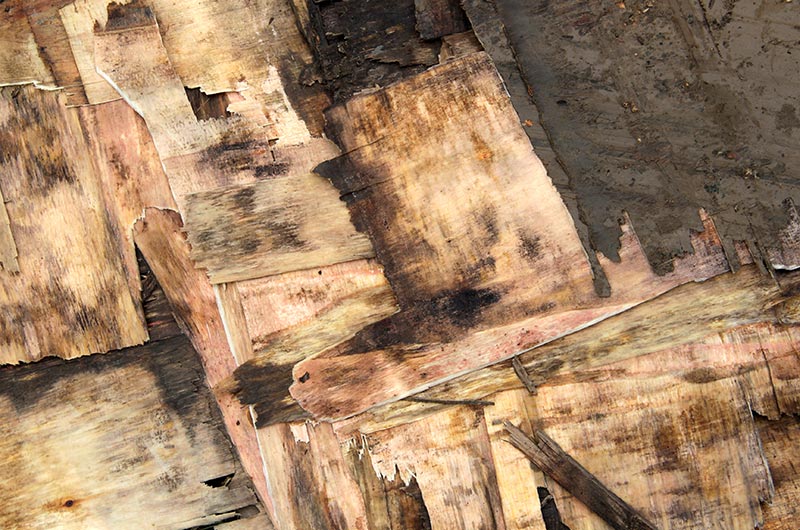
When Should You Call a Professional?
While smaller mold problems can often be addressed by homeowners, larger infestations may require professional intervention. Can mold on plywood cause harm if it’s not removed properly? Yes, it certainly can. If the mold infestation is widespread or if it’s hidden in areas that are hard to reach, such as inside walls or under flooring, it’s best to call in a mold remediation specialist.
A professional will have the necessary tools and expertise to safely remove mold from your home. They can also identify potential sources of moisture that could lead to future mold growth, allowing you to take preventive measures to protect your home.
Is Mold on Plywood a Long-Term Threat?
The danger of mold on plywood is not something that can be ignored for long. Is plywood with mold risky? Yes, the longer you leave mold untreated, the more dangerous it becomes. Mold on plywood can spread to other materials, damage the structure of your home, and harm your health. If you suspect mold is growing in your home, it’s important to take immediate action. Remove the mold, address the source of moisture, and take steps to prevent it from returning.
By following proper mold prevention practices and staying vigilant, you can ensure your home remains mold-free and healthy. Mold may seem like a small problem at first, but if left unchecked, it can lead to significant health and property damage. Always treat mold on plywood seriously and take the necessary steps to eliminate it.
Final Thoughts: Why You Should Address Mold on Plywood Immediately
Is mold on plywood dangerous? The answer is yes, mold on plywood can lead to serious health issues and significant damage to your home if left unchecked. Mold grows quickly in damp, poorly ventilated areas, and once it takes hold, it can spread rapidly, causing harm to your health and your property.
To protect your family’s health and avoid costly repairs, it’s essential to address mold problems promptly. Whether it’s a small spot or a larger infestation, make sure to act as soon as possible to eliminate the mold and prevent it from returning. If you’re unsure how to handle a mold problem, don’t hesitate to call a professional to help with mold removal and remediation.
Ultimately, the key to a mold-free home is regular inspection, proper moisture control, and prompt action when mold is discovered. By following these steps, you can keep your home safe and healthy, ensuring that mold on plywood never becomes a threat to your well-being.